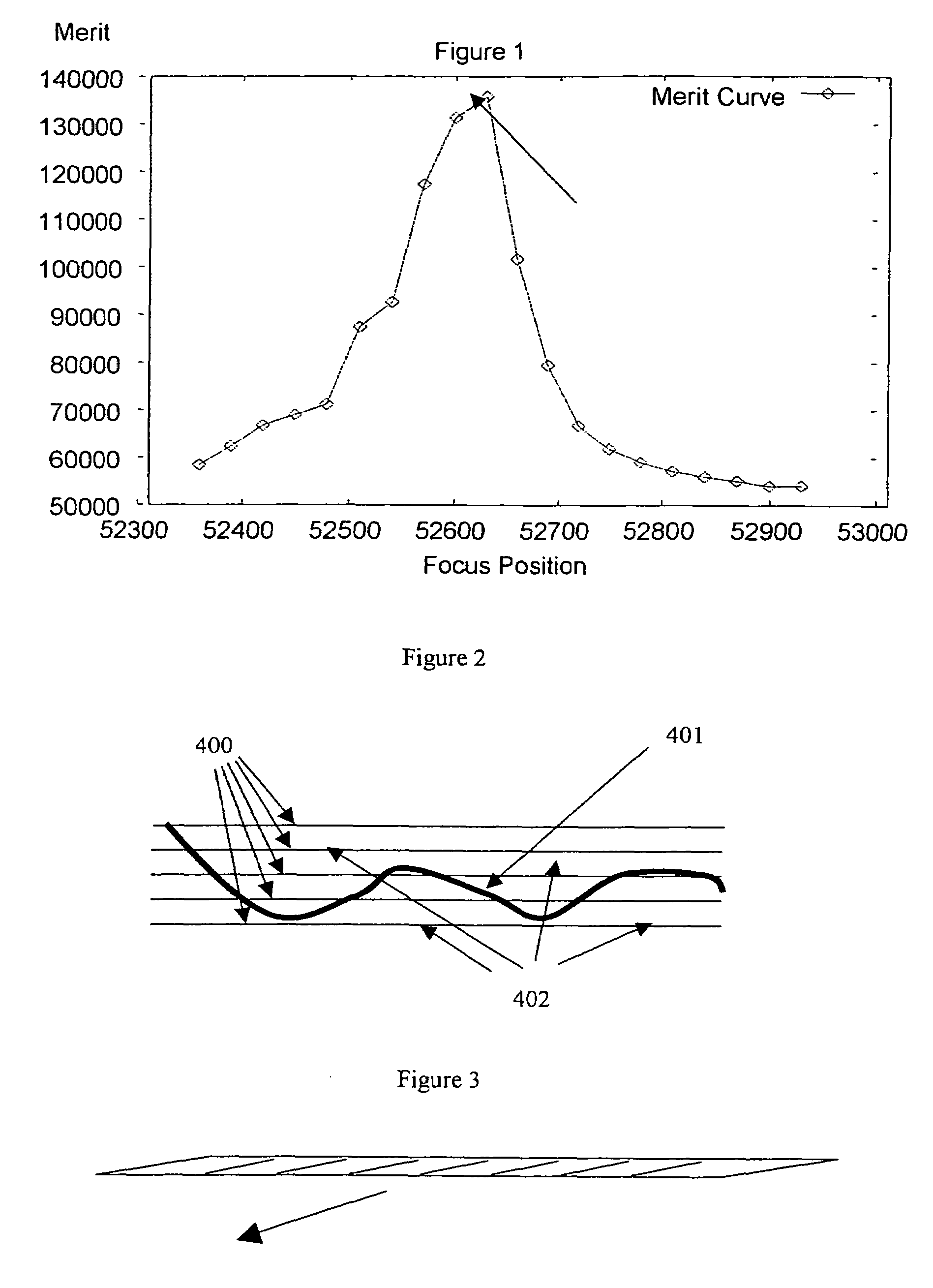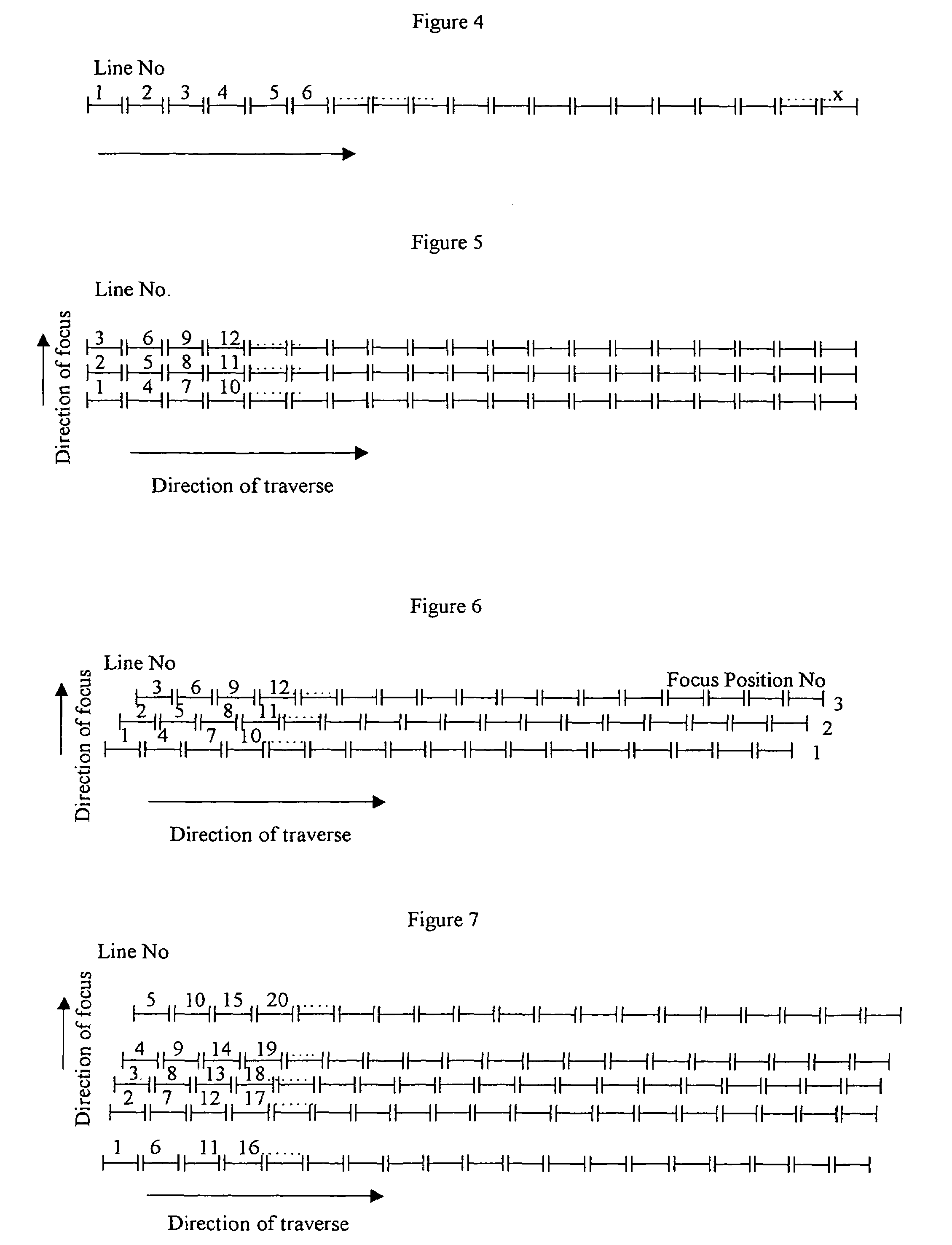Method and apparatus for forming a multiple focus stack image
a stack image and stack image technology, applied in the field of multiple focus stack image formation, can solve the problems of time-consuming, time-consuming, and the need to maintain the focus over the whole length of the scan,
- Summary
- Abstract
- Description
- Claims
- Application Information
AI Technical Summary
Benefits of technology
Problems solved by technology
Method used
Image
Examples
Embodiment Construction
[0072]Normal line scanning involves a single line array of x pixels, each pixel typically corresponding to a detector in the array. For colour, a single line for each of the three colours is provided (RGB for example). This single line is then traversed in a direction perpendicular to the line of the detector array. The traverse speed is set so that after one “line time” of the detector, the detector has traversed by a distance of one pixel in the scan direction so that the next line time produces a line of pixels abutted to the previous line. This is shown in FIG. 3 where a 1D array is scanned in the direction indicated by the arrow.
[0073]FIG. 4 is a representational layout of 1D array scanning as viewed from the end of the 1D array. The direction of the traverse is indicated by the arrow, with the first scan line being labelled “1”, the second “2” and so on. The simplest embodiment is to scan and to adjust the focus to different focus stack positions in between movements to the ne...
PUM
 Login to View More
Login to View More Abstract
Description
Claims
Application Information
 Login to View More
Login to View More - R&D
- Intellectual Property
- Life Sciences
- Materials
- Tech Scout
- Unparalleled Data Quality
- Higher Quality Content
- 60% Fewer Hallucinations
Browse by: Latest US Patents, China's latest patents, Technical Efficacy Thesaurus, Application Domain, Technology Topic, Popular Technical Reports.
© 2025 PatSnap. All rights reserved.Legal|Privacy policy|Modern Slavery Act Transparency Statement|Sitemap|About US| Contact US: help@patsnap.com



